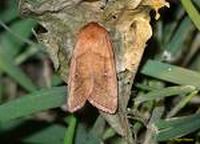 The humble moths of the London Zoo, victim of its much tattered image as an ugly, cloth-eating beast has never been much welcomed. And the result, the unfair and undeserved moths are dwindling to extinction.
The humble moths of the London Zoo, victim of its much tattered image as an ugly, cloth-eating beast has never been much welcomed. And the result, the unfair and undeserved moths are dwindling to extinction.
The culprits behind the moth’s decline, once again, include climate change and habitat loss followed by intensive farming. The overuse of pesticides and herbicides has also contributed hugely to the insect’s going endangered.
Besides their ugliness, and destructive nature, the moths have their fascination by their rights. Playing a major and serious role in the environment, the fall in the moths numbers threatens various species feeding on them — the birds, bats and small mammals.
Concerned over their dramatic decrease in number, Sir David Attenborough – a renowned conservationist -initiated a campaign, named Moths Count, at London Zoo to not just stop the butterfly’s less-loved cousin’s rapid decline, but also repair its much-maligned image.
Shockingly, it was discovered in many urban and southern areas that the moth population has almost halved since 1968! In just four decades, one-third of the country’s 900 larger moth species has plummeted by 32 per cent. This concern-raising status of the moth was revealed by the State of Britain’s Larger Moths – a report.
Coming up with generating enthusiasm and appreciation and developing a broader base of expertise and contribution to long-term preservation of the moths, the president of the charity Butterfly Conservation, Sir David said
We must reverse these declines. If we don’t, the outlook is grim. The consequences for Britain’s wildlife would be too dire to contemplate.
The first thing that needs to be done, while also trying to halt its extinction, is improving its much tattered image that has been created wrongly. People living in the region must be made aware of the fact that it is only about half a dozen of Britain’s 2,500 moth species that damage clothes. And, to add to, without them, there will be no pollination, which may starve the region’s beautiful birds to death.
Photo credit: royalparks.gov.uk

